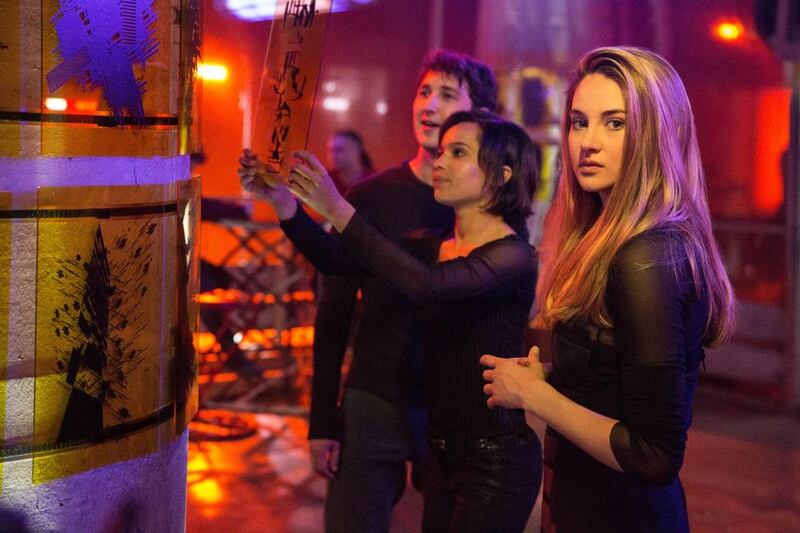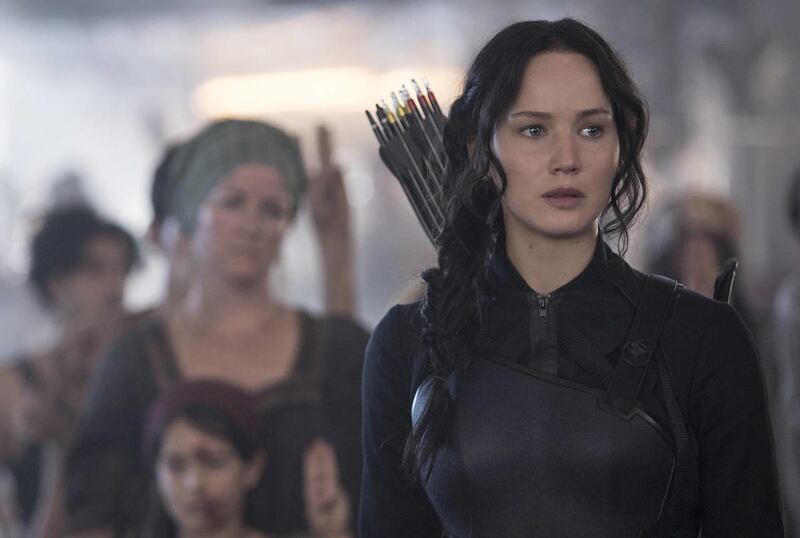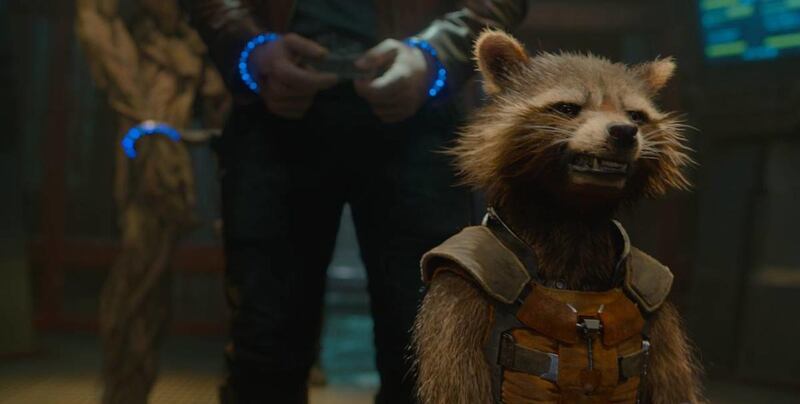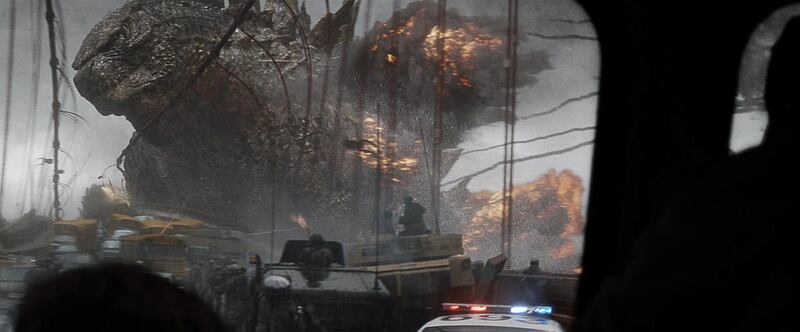Another year has come and gone, and Hollywood hasn’t imploded on itself yet, despite a series of major hacking scandals and one of the weakest summer box offices in the last decade.
Here’s a look back at 2014, including some of the best and worst trends.
How bad was the box office actually?
Much was made of 2014’s dismal box office. By midsummer, revenue from ticket sales was down 15 to 20 percent, according to the Hollywood Reporter, over what it had been the previous year, prompting the typical doom-and-gloom speculation about the future of the movie theater industry and whether 2014 could be the beginning of the end for traditional movie distribution.
That last part might actually end up being true, but 2014’s box office really wasn’t that bad.
After a weak summer lineup that generated predictably weak ticket sales, the industry has managed to regain some of its momentum thanks to a holiday movie season jam-packed with expensive, summer-sized tentpoles like “The Hunger Games: Mockingjay — Part 1” and “The Hobbit: The Battle of the Five Armies.”
Even so, annual box office is estimated to be down about 5 percent from what it was in 2013 — the biggest year-over-year decline in nearly a decade, according to the Hollywood Reporter.
But it has to be remembered that 2013 not only saw a record-breaking summer box office, but also a record-breaking year-end cumulative (via Box Office Mojo). According to the same metric that’s being used to evaluate last year (i.e. not accounting for things like inflation, 3-D ticket sales, etc.), 2013 was the biggest year in box-office history, so it really shouldn’t come as a surprise that 2014 didn’t top it.
That’s especially true when one considers the movies that did and didn’t get released. Two major summer features — Pixar’s “The Good Dinosaur” and Universal’s “Furious 7,” which, by even a conservative estimate, probably would have contributed a few hundred million to the pool — got delayed to 2015, leaving giant brontosaurus- and Vin Diesel-shaped holes in the summer box office.
Meanwhile, of the movies that were released in 2014, few stood much of a chance against 2013’s billion-dollar box-office juggernauts “Iron Man 3” and “Frozen,” each of which earned more than $400 million in the U.S. alone. Not even Rocket and Groot or Gareth Edwards’ surprisingly cuddly Godzilla could match that. So, all in all, 2014 was about as good as anybody could have reasonably hoped given the product available to audiences.
Now, if 2015’s dream-team lineup of franchise entries like “The Avengers: Age of Ultron” and “Star Wars: The Force Awakens” doesn’t manage to break 2013’s box-office record, that would be concerning.
Box office aside, last year was a good time to be a film fan for a lot of reasons. Here are a few:
Animation
The year 2014 was the first in nearly a decade that Pixar did not have a movie in theaters. Although that left families with one less excuse to go out together, that absence was not felt nearly as much as it might have been in years past, thanks to strong offerings from other animation studios.
Foremost among these was Pixar’s sister studio, Disney Animation, which had another phenomenal year. With “Frozen” still dominating the box office well into 2014, November’s release of “Big Hero 6” seemed to confirm what a lot of people had already been whispering — namely, that we are in the midst of a second Disney Renaissance.
Just as “Frozen” began to relax its death grip on the box office, though, it was a new studio that really blew moviegoers away. Modeled on Pixar with a core “brain trust” of creative talent, the recently formed Warner Animation Group introduced audiences to a refreshingly different world with “The Lego Movie,” which went on to gross $257 million domestically and earned a Pixar-level 96 percent fresh on rottentomatoes.com.
“The LEGO Movie” is indicative of the greater variety in general that audiences are seeing in animation these days. Rather than endless “Toy Story” clones, other animation studios have started to really find their own voices, whether that be the cartoony comedy of “Penguins of Madagascar” or Laika’s beautifully strange stop-motion films like “The Boxtrolls.”
Superhero movies
As if it needed saying, superheroes aren’t going anywhere anytime soon. However, last year saw the genre really stretch beyond the basic formula. These are no longer just origin stories for characters grappling with superpowers in the only way they know how — by dressing up in flashy costumes and hitting the streets.
“Captain America: The Winter Soldier,” for instance, was as much an homage to ‘70s political thrillers like “Three Days of the Condor” as it was a conventional superhero movie, right down to the casting of Robert Redford.
Then there was “Guardians of the Galaxy,” one of the riskiest blockbusters in recent memory — and, it just so happens, the highest-grossing movie of 2014. An irreverent space opera by way of “Raiders of the Lost Ark,” “Guardians” completely blew the roof off what a comic book movie can be.
Finally, Fox’s “X-Men: Days of Future Past,” a time travel yarn a la “The Terminator,” more or less successfully hit the reset button on the franchise that arguably started the whole superhero movie trend in the first place.
Whether one is a particular fan of superhero flicks or not, this is good news since there are currently around 30 comic book movies in the pipeline, including around 10 each from DC and Marvel. The more they begin to break away from conventions, the better.
Young adult adaptations
Largely on the strength of the Hunger Games movies, Jennifer Lawrence was 2014’s highest-grossing actor, according to Forbes, beating out names like Chris Pratt and Scarlett Johansson for the title to the tune of $1.4 billion. Not bad for a 24-year-old.
But unlike recent years, which tended to see more failed YA adaptations than hits, Katniss was not the only YA success story in 2014.
Two new franchise-starters, “Divergent” and “The Maze Runner” (based on the book by Utahn James Dashner), also took off last year and will get sequels in 2015.
The most successful new YA adaptation, though, made no attempt to be the next Twilight or Hunger Games. On a budget of around $12 million, John Green’s romantic drama about cancer patients, “The Fault in Our Stars,” grossed $304 million worldwide, including almost $125 million domestically. Just as impressive, Shailene Woodley (who also stars in “Divergent”) is getting Oscar buzz for her lead performance.
In some ways, this seems to mark a coming of age for the YA genre. No longer catering to a specific set of fans, YA movies are tackling bigger issues, including war, revolution, death, etc., in ways that appeal to a broader audience.
YA movies are also providing some genuinely great roles for women. As noted in a Forbes article, only 15 percent of protagonists in movies are female (despite the fact that women account for a larger percentage of the moviegoing public than men, according to the MPAA's Theatrical Market Statistics report last year). That figure, however, is drastically different within the YA genre, where characters like Katniss and Tris are the norm.
Just as with animation and superhero movies, the future of YA adaptations is looking brighter than ever.
The bad parts
For all the talk of weak ticket sales, 2014 was remarkably free of major box-office debacles. There wasn’t really a “Battleship” or “Lone Ranger.”
That doesn’t mean there weren’t missteps, though.
Plenty of films underperformed domestically, including “Hercules,” “Edge of Tomorrow,” “Mr. Peabody and Sherman” and “Transformers: Age of Extinction.” However, domestic box office is beginning to mean less and less — as are domestic audiences’ opinions. Although “Transformers: Age of Extinction” scored a 19 percent on rottentomatoes.com and earned considerably less than any of the previous Transformers movies stateside, according to Box Office Mojo, it still managed to gross more than $1 billion worldwide, including $300 million in China alone. Naturally, a sequel is already in the works.
Expect to see this become commonplace.
Perhaps the biggest misstep of all in 2014, however, was the awkward, ham-handed way studios are trying to get in on the shared cinematic universe format pioneered by Marvel.
Both Sony with “The Amazing Spider-Man 2” and Universal with ”Dracula Untold” took stabs at starting Avengers-style mega-franchises, but neither one was particularly successful.
Although both films made money, it remains to be seen whether the studios will plow forward with their planned cinematic universes or whether they’ll scrap them and try again.
On the horizon are shared-universe iterations of everything from King Arthur and the Knights of the Round Table to Robin Hood and the Ghostbusters, potentially.
So far, though, the only studio to pull this kind of thing off is, well, Marvel itself.
Wrapping up
Despite some negative trends and disappointments, 2014 ended better than it might at first appear.
Yes, box-office numbers were down, but the overall quality of key genres, including kids animation, comic book movies and YA adaptations, is better than ever.
Blockbusters are, by and large, getting smarter — just compare last year’s “Godzilla” to its 1998 counterpart for proof — and studios are taking the kinds of risks that should be applauded — like gun-toting raccoons and talking trees — even if they don’t always pan out.
All in all, with 2014 behind us and 2015 having one of the strongest movie release lineups in years, it’s not a bad time to be a movie fan.
Jeff Peterson is a native of Utah Valley and studied humanities and history at Brigham Young University. Along with the Deseret News, he also contributes to the film discussion website FilmInquiry.com.







